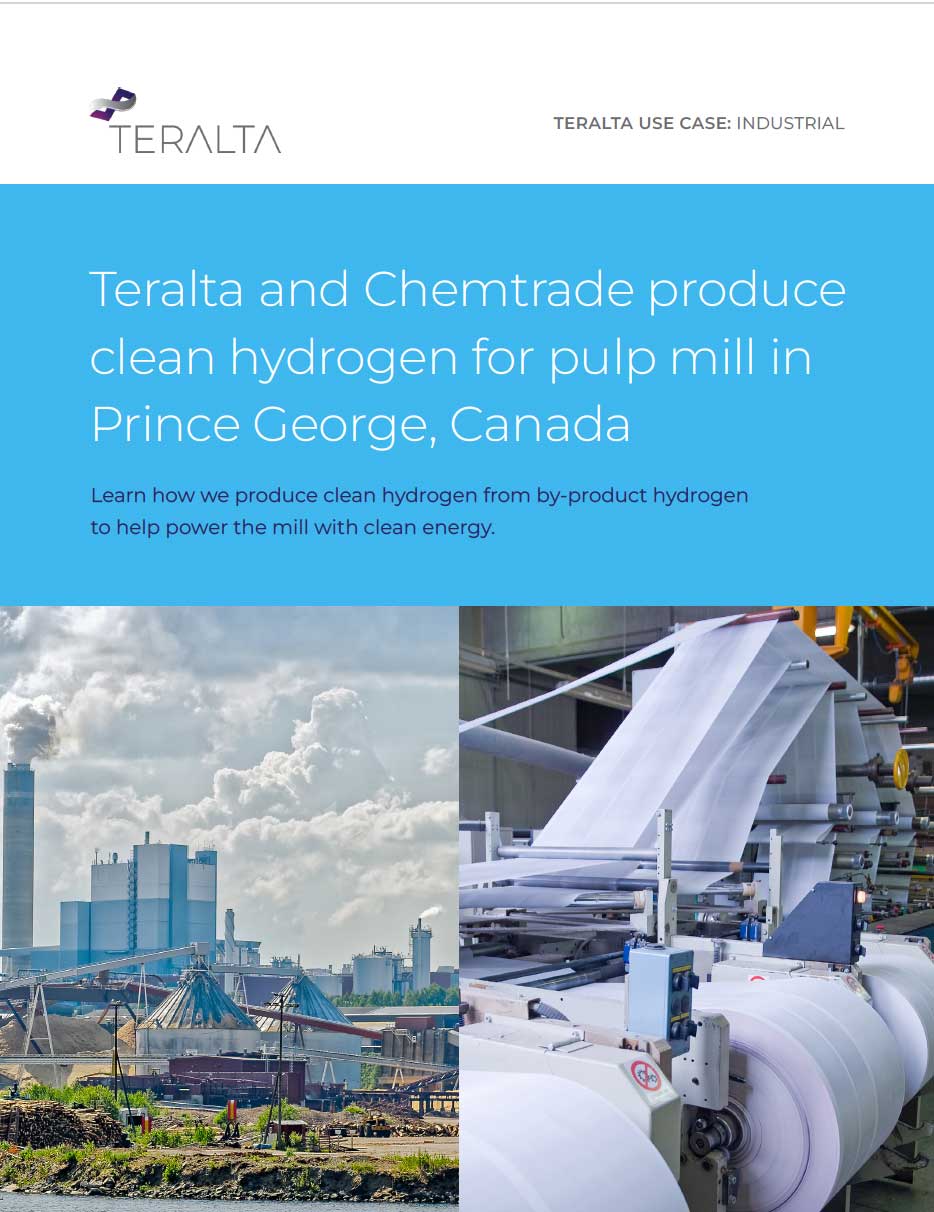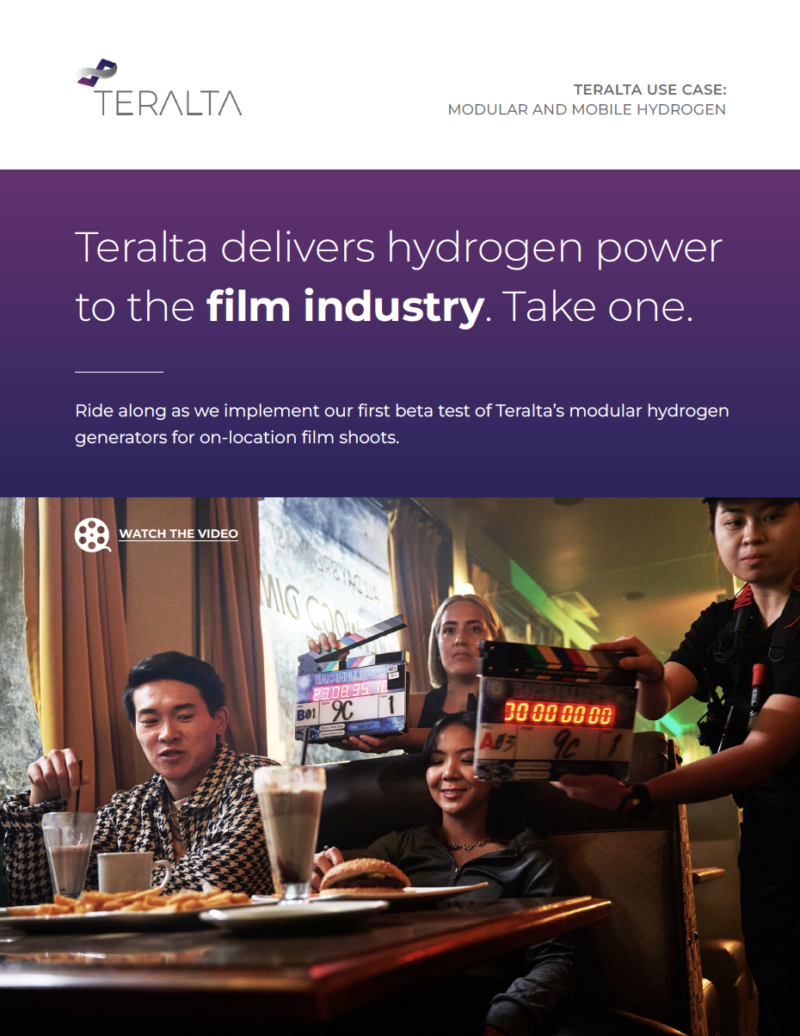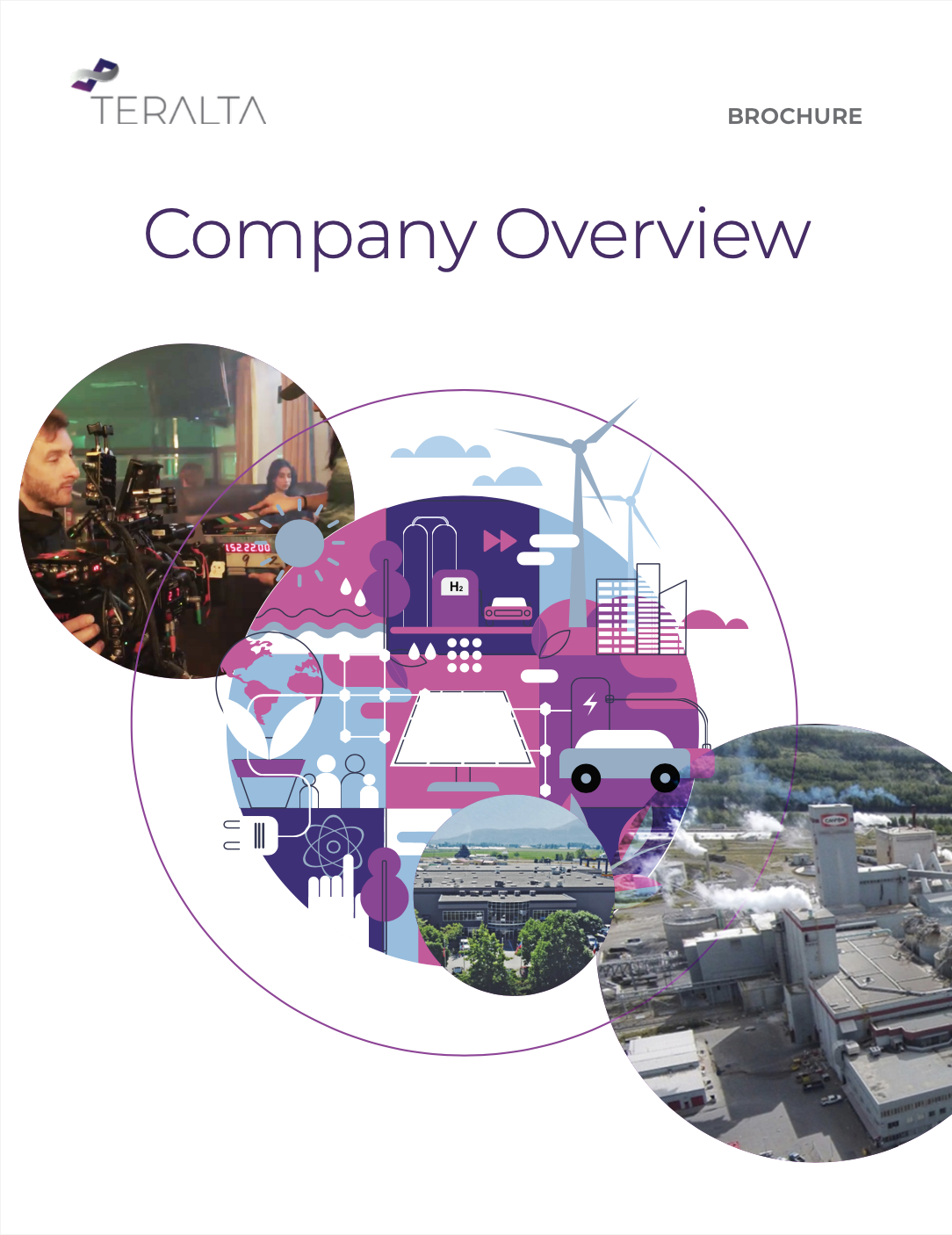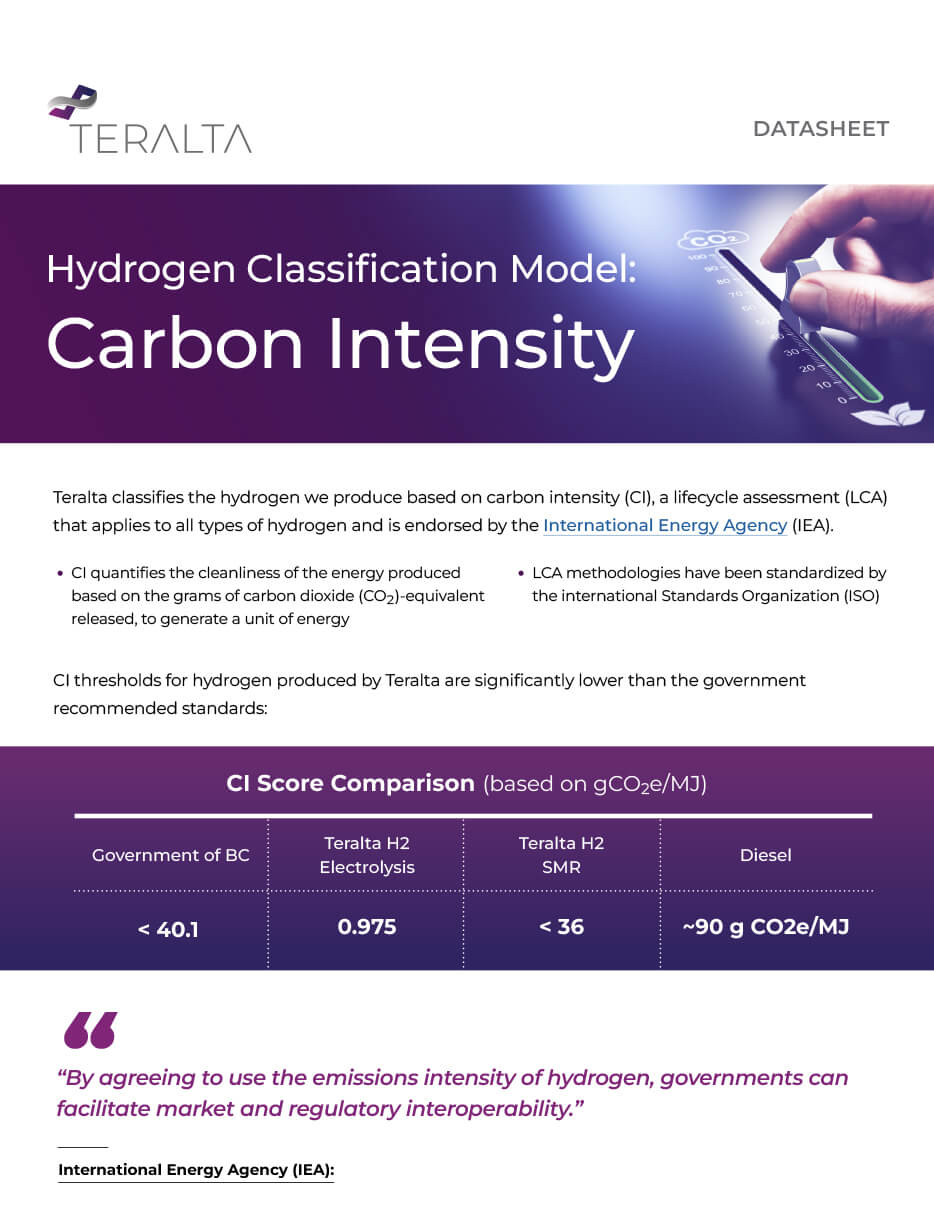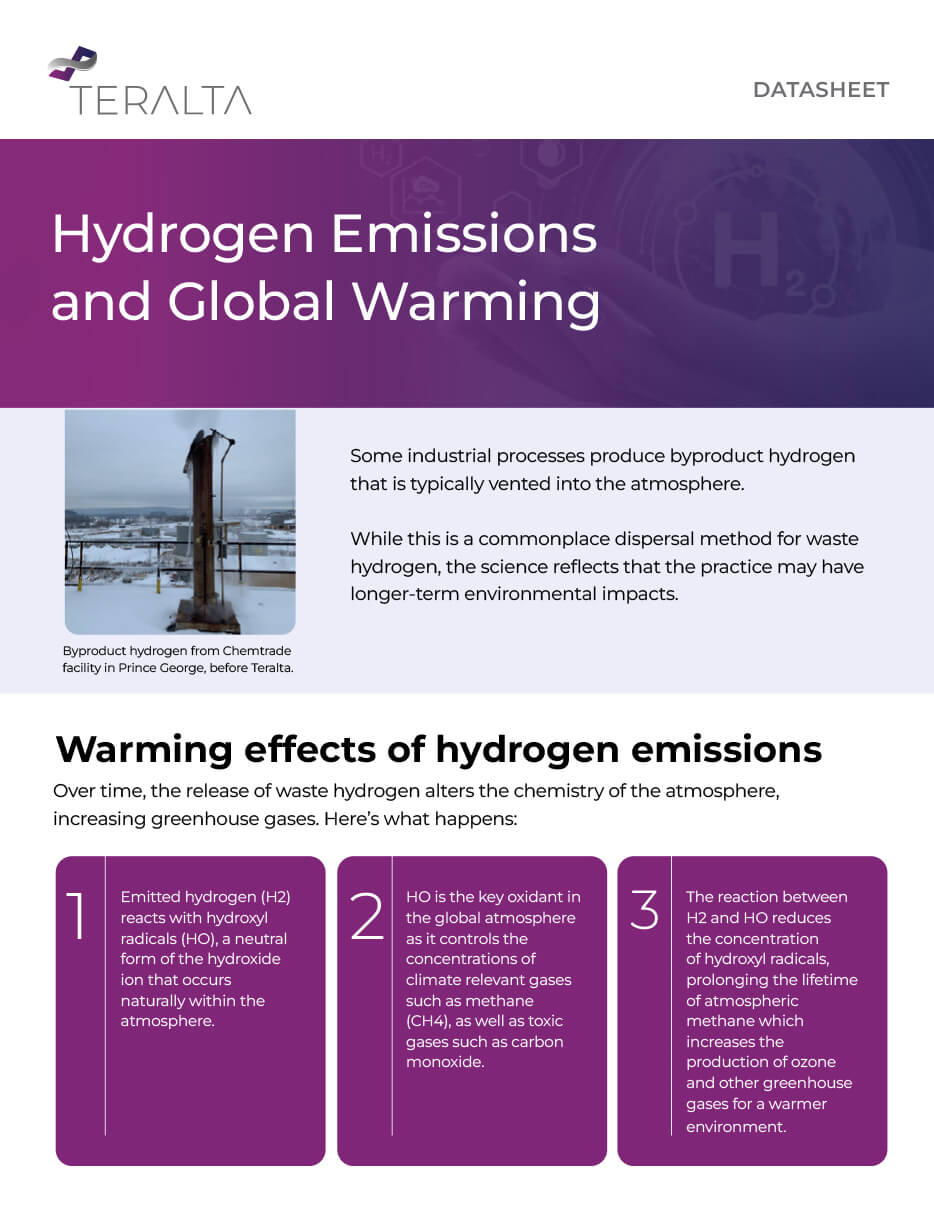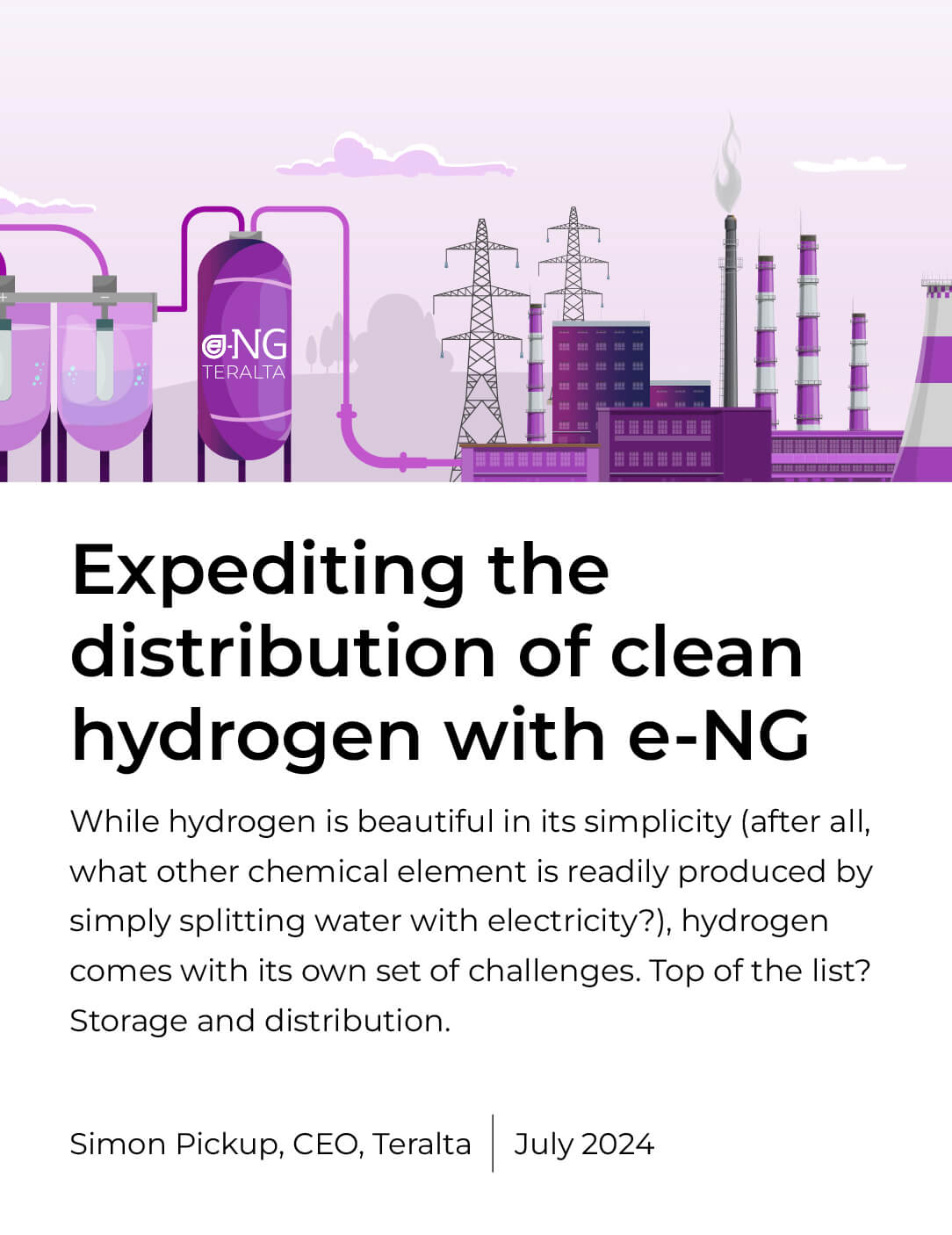Resources
What's New
Expediting the Distribution of Clean Hydrogen with e-NG
Clean & Competitive – A Blueprint for BCs Industrial Future
Teralta launches clean hydrogen system to help power Pulp Mill in Prince George, Canada
Teralta Videos
FAQs
Hydrogen fuel cells produce electricity by combining hydrogen and oxygen atoms. The hydrogen reacts with oxygen across an electrochemical cell – similar to a battery – to produce clean, emission-free electricity, as well as water and heat.
A fuel cell involves two areas of gas, separated by a membrane, that limits particle movement to a single type of particle. A catalyst at the anode (inside the fuel cell), causes hydrogen gas to split into positively- and negatively-charged electrons.
Teralta technology involves proton-exchange membrane fuel cells (PEMFC), also known as polymer electrolyte membrane fuel cells. Distinguishing features include lower temperature and pressure ranges (50 to 100°C), and a special proton-conducting polymer electrolyte membrane.
The PEMFC guides protons through to the cathode, while forcing electrons along an external circuit, with both arriving at the same destination.
The movement of the electrons creates an electrical current. Once reunited, the electrons and protons combine with oxygen to form water, the only by-product of the process.
Hydrogen fuel cell generators are much more efficient than internal combustion engine generators, providing clean, virtually silent, emission-free electricity.
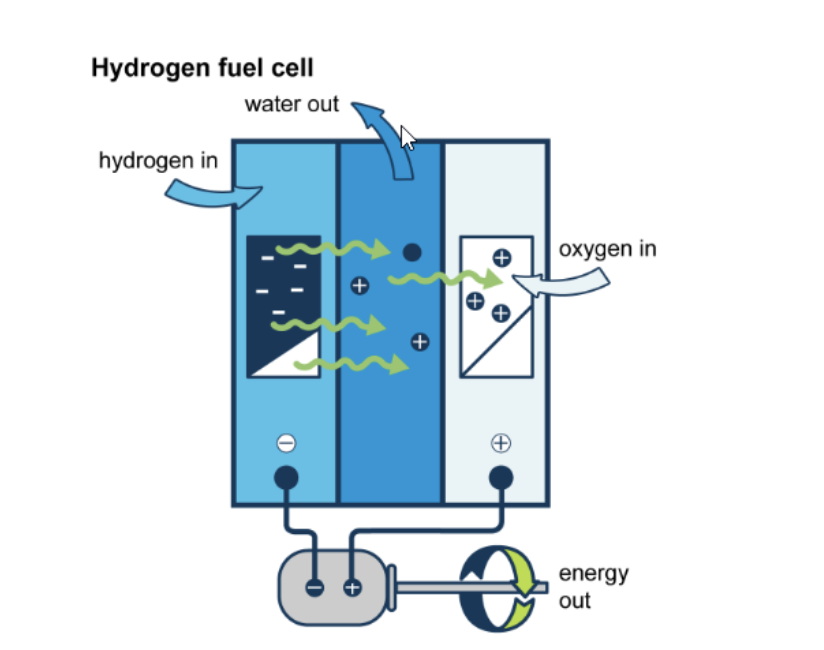
Image from the U.S. Energy Information Administration (EIA): Hydrogen Explained
While Teralta does not use hydrogen internal combustion engines (ICEs), the term is easily confused with the technology we provide: hydrogen fuel cell generators.
Hydrogen ICEs are similar to diesel internal combustion engine generators. The only difference is that they run on hydrogen. But unlike hydrogen fuel cell generators, ICEs use a combustion versus an electrochemical process. And an ICE is not emission-free, emitting a small amount of CO2 and NOx. These engines are also less efficient, heavier, and much louder.
Each generator varies by cost, with ICEs coming in at a slightly lower capital cost than a fuel cell generator. However, the longer term operating costs are higher for an ICE given its overall inefficiencies versus a fuel cell generator.
Quantifying the environmental benefits of hydrogen requires that a universal standard be applied across all types of hydrogen. While the “hydrogen rainbow” is ubiquitous within the industry, it is open to interpretation and lacks a consistent baseline.
Teralta classifies the hydrogen we produce based on carbon intensity (CI), a scientific methodology that applies to all types of hydrogen and is endorsed by the International Energy Agency (IEA).
CI benchmarks are typically set by government bodies such as the California Air Resources Board and the Government of British Columbia.
CI thresholds for hydrogen produced by Teralta are significantly lower than the government recommended standards:
Hydrogen gas does not contain any carbon atoms, so there are no carbon emissions associated with its use. However, carbon emissions and other pollutants may occur based upon how the hydrogen is produced.
For example, gray hydrogen uses steam methane reformation. During the reforming process, methane (CH4) sourced from natural gas, reacts with steam (H2), generating hydrogen, carbon monoxide, and carbon dioxide. As a result, significant amounts of greenhouse gas emissions are produced, making gray hydrogen the most carbon-intensive of all hydrogen types.
The potential for carbon dioxide emissions and other pollutants with hydrogen depend entirely upon how the hydrogen is produced.
According to the Department of Energy, hydrogen is a very safe, non-toxic fuel. It is lighter than air and dissipates rapidly when released, ensuring relatively rapid dispersal of the fuel in case of a leak. In fact, the department considers hydrogen properties to be safer to handle and use than the fuels commonly in use today.
However, as with any fuel, certain controls must be in place to ensure safety. These include adequate ventilation, leak detection, and the safe design of hydrogen systems. Training is also important.
Recently, Teralta conducted a mobile hydrogen beta for the film industry, providing hydrogen to power a film shoot. During the beta, the hydrogen safety regulations aligned with the existing protocols in place for diesel generators, providing an easy transition. For example, no smoking near the generator.
